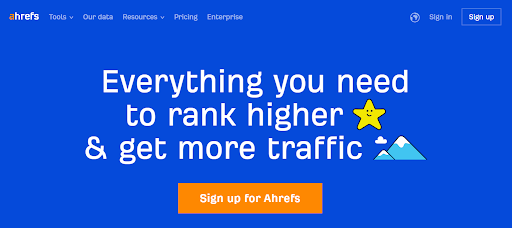Lead generation is vital for every business’s success. The process includes attracting qualified leads, nurturing them through the marketing sales funnel, and converting them into paying customers.
Blogging is among the best lead generation tools. Through blogging, business owners can produce valuable content related to their business, raising awareness for their brand. Studies also reveal that companies who blog generate 67% more leads than those who don’t.
The most common way of generating leads through blogging is to create a blog post containing a landing page link, where users can download exclusive content, register for a newsletter, or buy a product. In today’s content marketing landscape, high-quality content is what every business owner should offer.
This article will cover five ways to scale your lead generation efforts through blogging. We hope these tips help you organize your marketing strategy for the better to generate and nurture more leads into paying customers.
How Blogging Helps Generate Leads
The whole lead generation process begins with building brand awareness, which is how brands and companies get their name out in public to attract potential leads. With a blog, business owners can streamline this process. Before we go to the tips, let’s dive deeper into how blogging is an excellent strategy to generate leads.
Blogging is a Cost-Effective Content Marketing Strategy
Setting up a blog is affordable. All you need to do is:
- Find a credible hosting provider – starts from $2.95/month.
- Register a domain name – between $10 and $20/year or included in the hosting plan.
- Start creating content. Choosing a reliable hosting provideror web hosting alternatives, like Hostinger, Bluehost, or SiteGround is crucial to ensure excellent blog performance. In most of these providers, users can get an affordable domain name for one year with most of its plans. In addition to blogging-related tools, there are tools like domain name searcher to help you find the perfect blog name.
Blogging Helps Generate More Traffic

Blogging, combined with excellent search engine optimization (SEO), can help a business stand out from the competition. Strategic SEO can boost a blog post’s ranking on search engine results pages. The higher a web page ranks, the more organic traffic it generates. You can also incorporate quality link building into your SEO strategy this will help people think you are a credible brand when your website appears as a top search result. Before you start, consider to analyze competitors' backlinks and content.
Blogging also offers content repurposing opportunities. For example, business owners can transform their blog content into a video or an infographic. Besides generating traffic to the website, this strategy helps increase the business’s market reach.
Blogging Can Establish Brand Authority as a Thought Leader
One of the keys to establishing authority is by providing valuable content. As people continuously seek information online, business owners can use this opportunity to address their inquiries and offer solutions if they want to make money online more effectively.
Besides educating blog readers, helpful content gives them reasons to return. Once a blog has become a knowledge source for its audience, business owners have a higher chance of proceeding with lead nurturing.
How to Scale Lead Generation Through Blogging
Blogging as a lead generation tool can help business owners achieve their marketing goals, whether to grow a following, expand the business’s market or boost revenue. This section will dive deeper into five tips for generating leads through blogging.
1. Get to Know Your Target Audience

Determining your target audience is vital for successful blog marketing. Apart from setting the content’s tone and voice, this process helps business owners understand consumers’ needs and fill a gap in the market. Eventually, all your endeavors on-site, off-site, and technical SEO optimization are meant to satisfy the customers' needs.
Creating a buyer persona is a great way to discover your business’s potential customers. A buyer or customer persona is a semi-fictional character representing a company’s target audience. Include the information below when developing a customer persona:
- Name
- Age
- Location
- Occupation
- Income
- Life goals
- Motivations
- Hobbies
To develop a more accurate persona, blog owners should utilize data on consumer behavior. Use a customer engagement platform like HubSpot, Salesforce, or Zendesk to track and analyze previous customers’ interactions at every touchpoint, including emails, product catalogs, and blog posts.
2. Plan Content for Each Stage in the Lead Generation Funnel
The lead generation or marketing funnel consists of five stages – Awareness, Consideration, Conversion, Loyalty, and Advocacy. In general, blog posts are perfect for the awareness stage. However, an excellent content marketing strategy doesn’t stop there.
To achieve conversions and increase revenue, business owners should invest their time in lead nurturing. Apart from blog posts, marketers may utilize other content, like promotional emails and case studies, to successfully convert leads into paying customers.
Many marketers use an editorial calendar to plan their content. An editorial calendar helps maintain organization across marketing teams as the hub for your marketing efforts. It also helps with content brainstorming and performance tracking. Alongside having a content calendar, it will be beneficial to collaborate with lead generation services as they will help you to grow your audience.
3. Conduct Proper Keyword Research
Keyword research enables marketers to identify what users look for on search engines like Google, Bing, and DuckDuckGo.
Typically, this research involves finding queries to target, analyzing their popularity, and determining their ranking difficulty. Finding relevant keywords also helps writers to strategically include them in blog posts as part of their on-page SEO effort. You should also think about the search intent behind those keywords as well, as that will ultimately determine at what stage in the buying process that searcher may be in.

Semrush, Ahrefs, and Google Keyword Planner are among the best keyword research tools. With Semrush, users will get a list of five to 10 highly specific keywords their competitors use. In comparison, Ahrefs provides a broader report with 1000+ keyword suggestions.
4. Write Valuable Content
Valuable content is a crucial factor for a blog’s success. It should be authentic, high-quality, and informative. Here are some tips for crafting engaging content that converts leads:
- Define your goals. These may include generating more leads, gaining authority, and making more sales. A clear goal will help business owners focus on what’s important to stay on track.
- Be original. Authenticity sets a blog apart from its competitors, affecting the site’s credibility. Original and unique content can also attract high-quality backlinks.
- Test and evaluate. Content testing is about reviewing if your posts are helpful for readers. Assess content performance by looking into its usability, readability, accessibility, and searchability.
Placing a lead form in blog posts or landing pages is also a great way to grow an email list and attract qualified leads.
With a lead magnet, business owners can provide downloadable content in exchange for users’ contact information. Guides, cheat sheets, and eBooks are popular examples of valuable lead magnets.
5. Add Calls-to-Action

A call-to-action (CTA) is a vital component of lead generation. It’s a link on a web page encouraging website visitors to take a specific action – for example, Sign Up, Subscribe to Our Newsletter, or Book Your Appointment.
While CTA creation is more common in email marketing, a blog post can also be an excellent place to insert one. Whether readers download an eBook or subscribe to exclusive content, CTAs open up opportunities for lead nurturing.
Here are some CTA use cases for a blog article:
- In-line CTA. It’s one of the most popular ways to include a call-to-action in a blog post. For this, marketers can simply link a text block to direct site visitors to another web page, blog post, or landing page.
- Pop-up CTA. This CTA appears on top of the blog content. While it ensures more impressions, using pop-ups can be tricky as it can disrupt the user experience.
- Slide-in CTA. A great alternative to pop-ups, this CTA usually appears below the sidebar.
Conclusion
Blogging is a powerful way to attract leads. Besides being cost-effective, excellent blog performance helps generate organic traffic and establish brand authority.
Here’s a short recap on how to generate more leads through blogging:
- Know your target audience. This ensures that the blog content addresses the target customers’ pain points.
- Plan your content. Strategically plan blog posts for each marketing funnel stage using an editorial calendar.
- Conduct proper keyword research. Optimize content for search engines by utilizing a keyword research tool to discover popular queries.
- Write valuable content. Be sure to offer original, helpful content to attract sales-qualified leads. Inserting lead magnets is also a great way to generate hot leads.
- Add a call-to-action. A CTA allows business owners to nurture their leads further.
Write content that’s relevant to your niche to ensure that you generate qualified prospects. You can also integrate different distribution channels, including social media platforms, to expand your reach. Good luck with scaling your lead generation strategy through blogging!
About the author:
Mudit is a technology geek who loves spending time knowing the latest technology that particularly encapsulates the nuances of social media and digital marketing. He is a content writer by choice and loves playing with words while providing insightful details about any topic.
What would you like to know and what would be the best way to share this information with you? What are the best tips & tricks, what workaround do you use? We'd really appreciate your insight on these ones to make our integrations better, more productive, and much more efficient. Comments, tweets are always welcome.